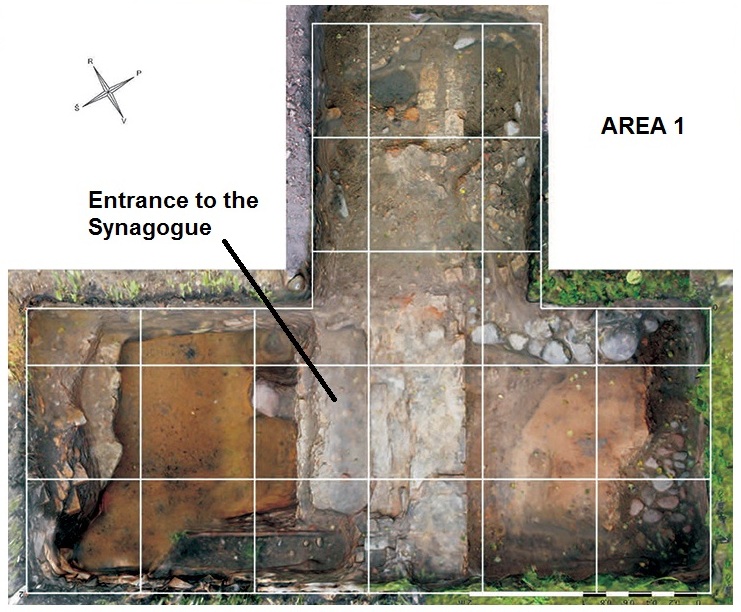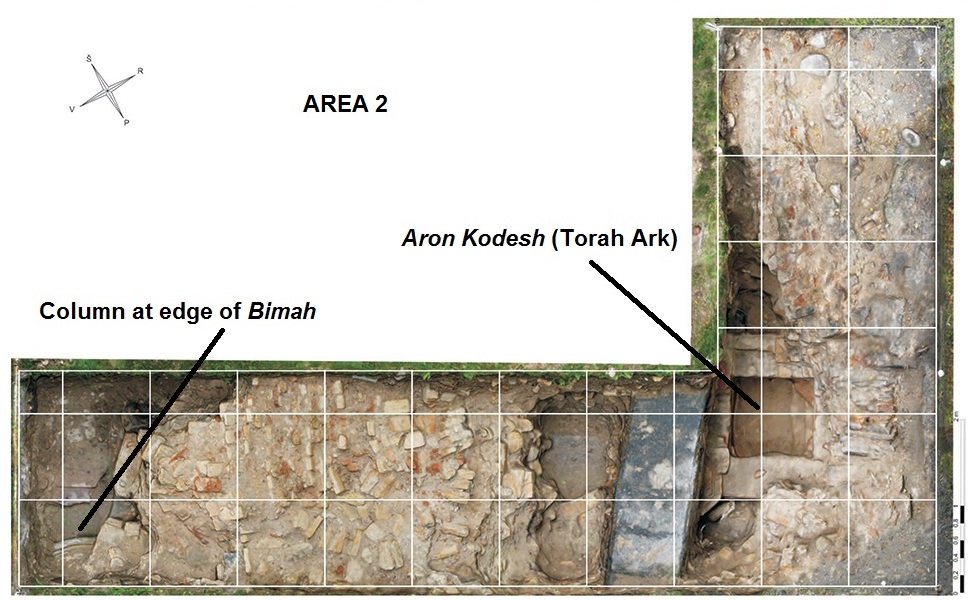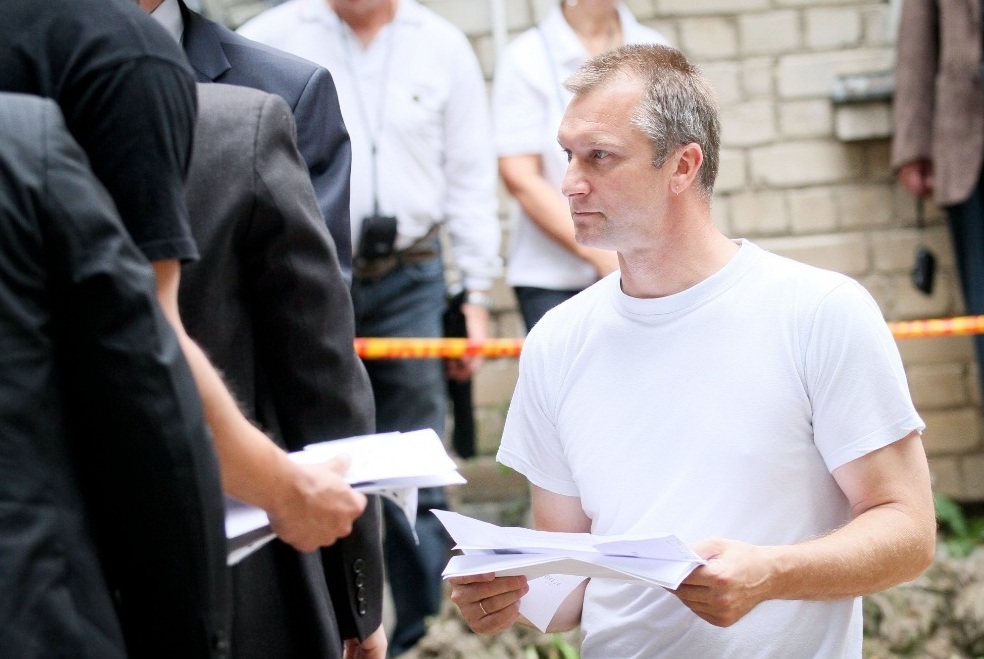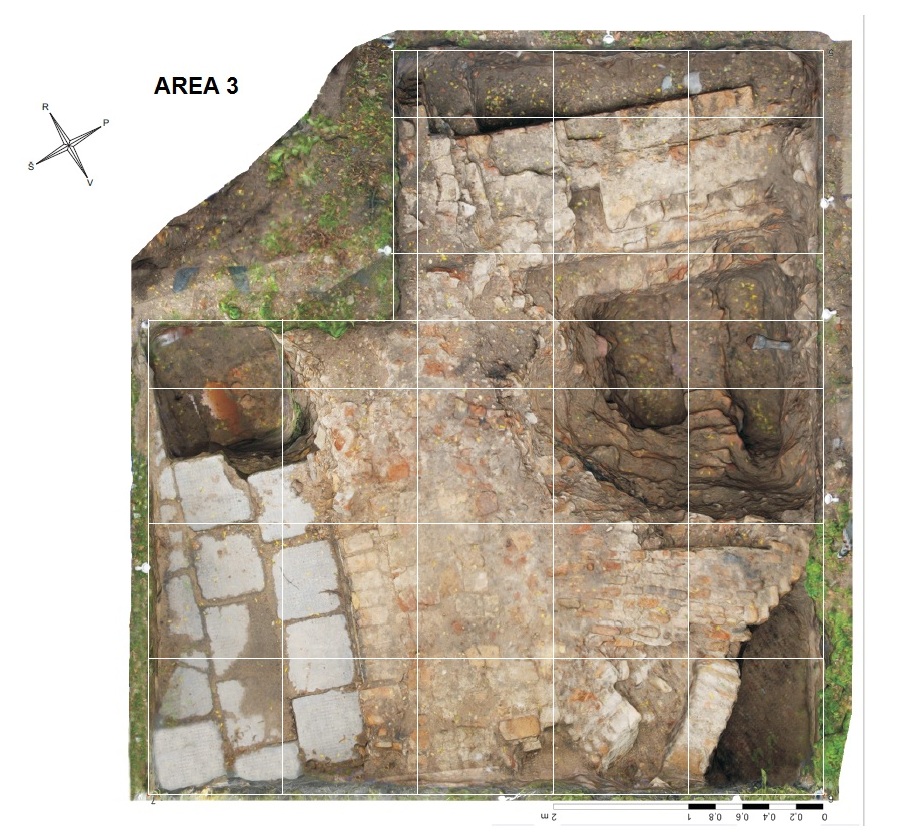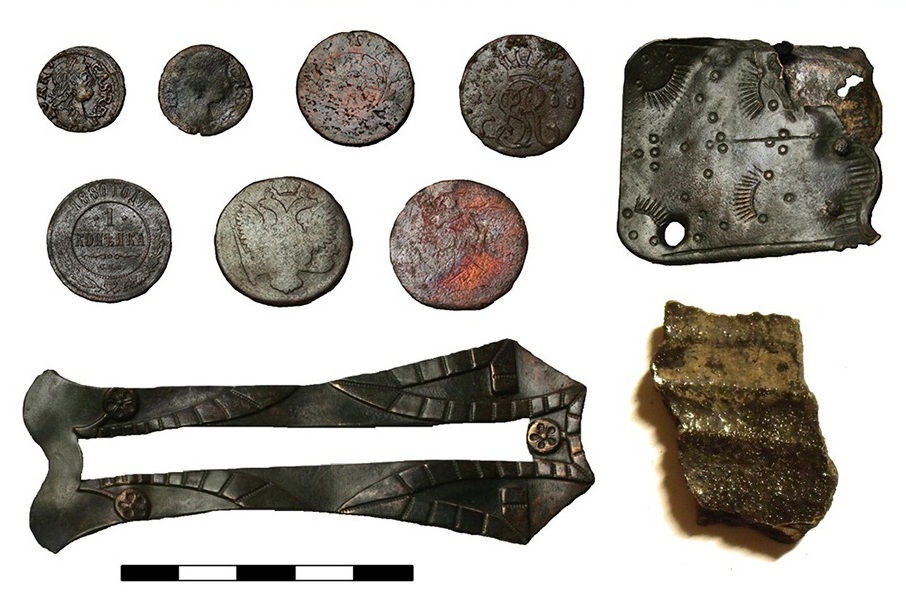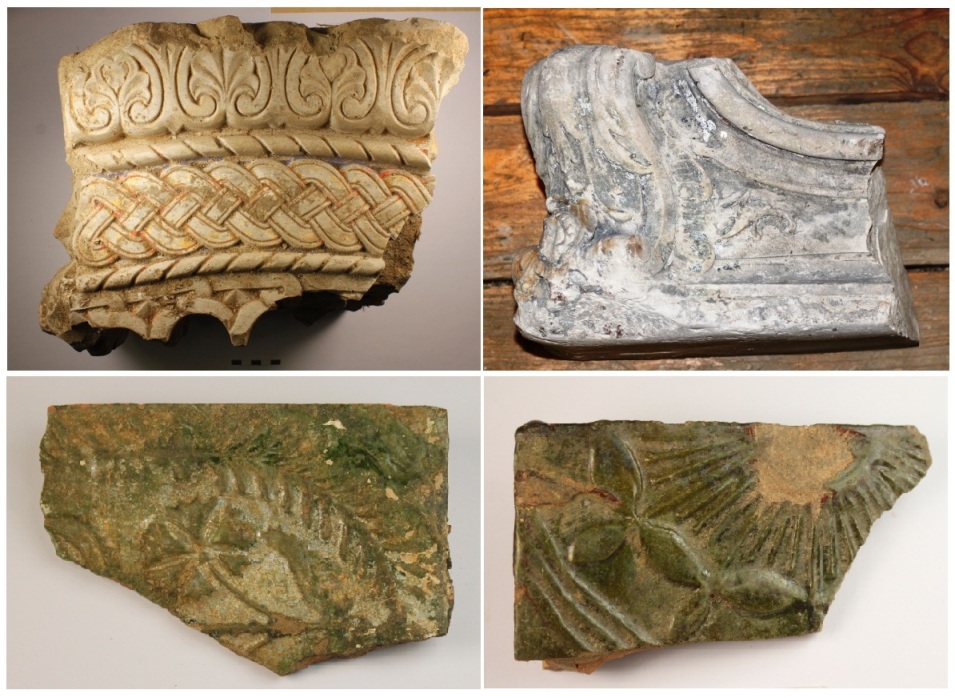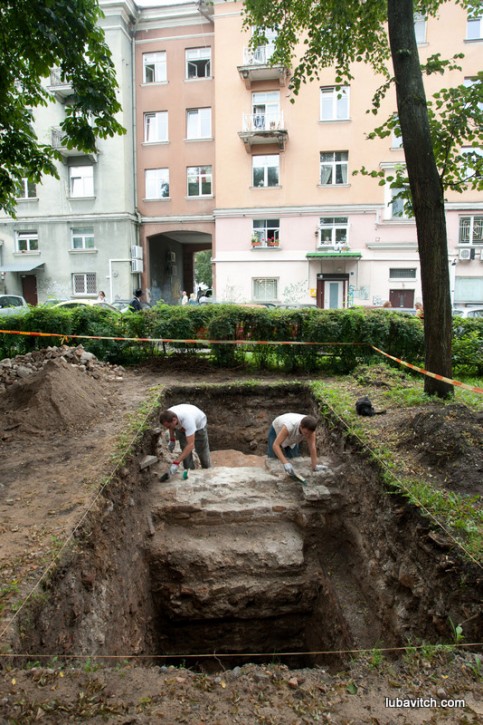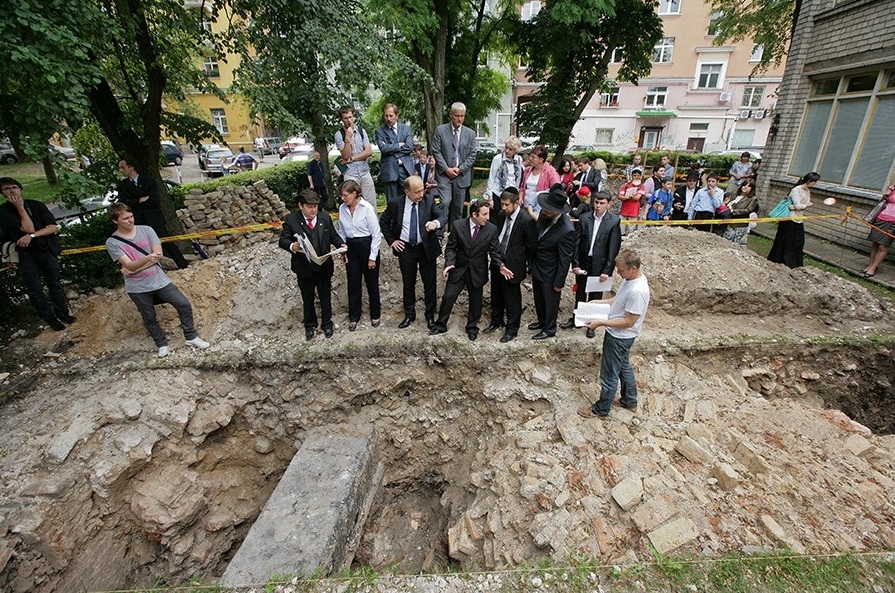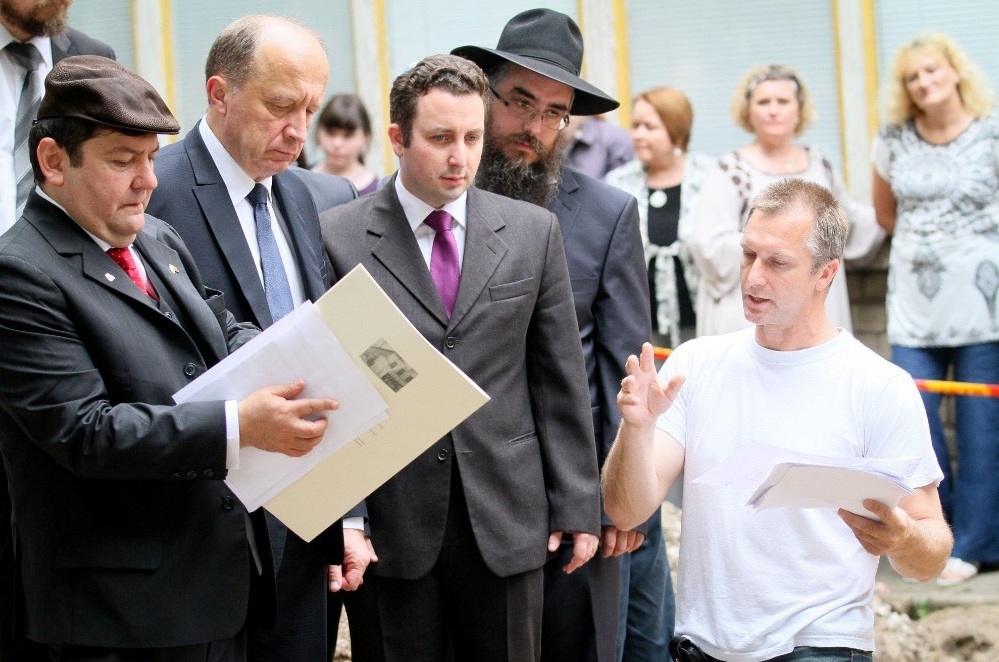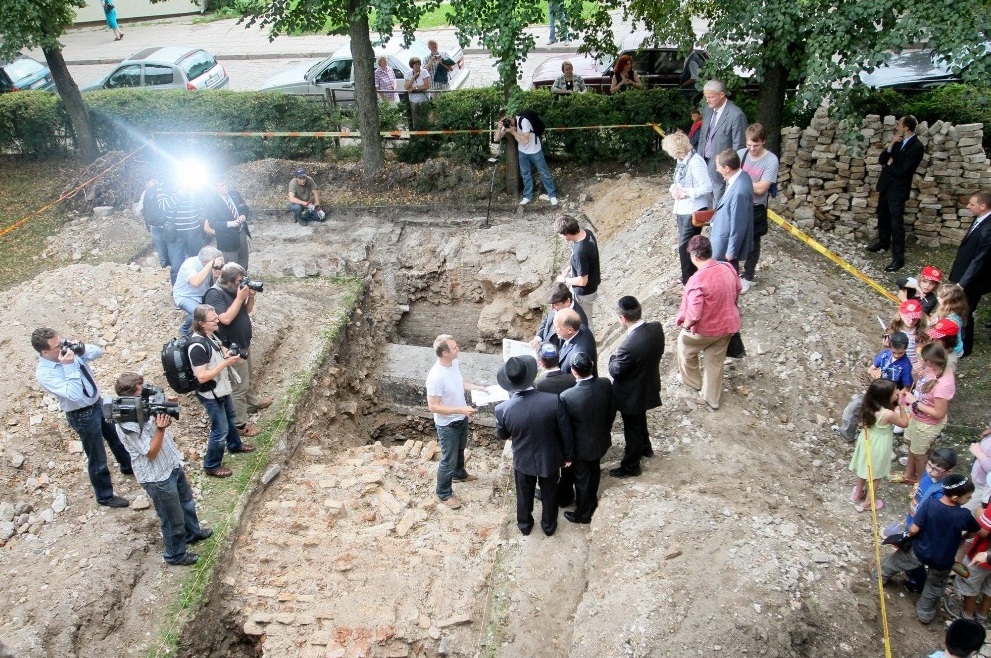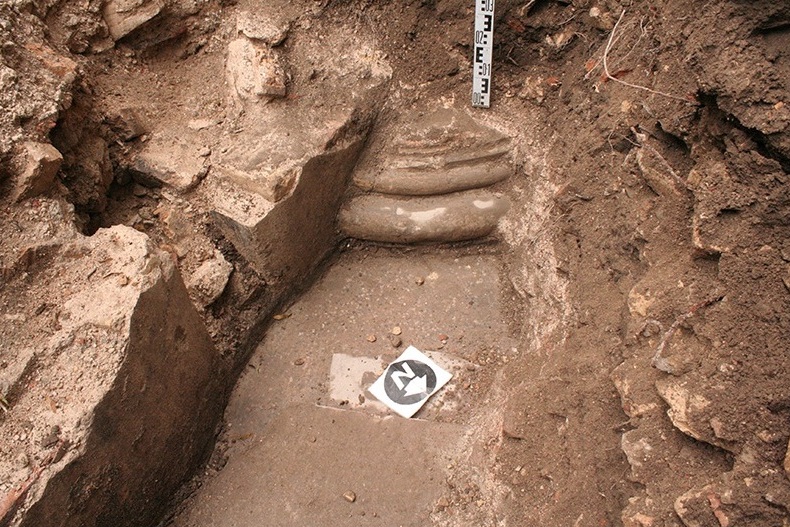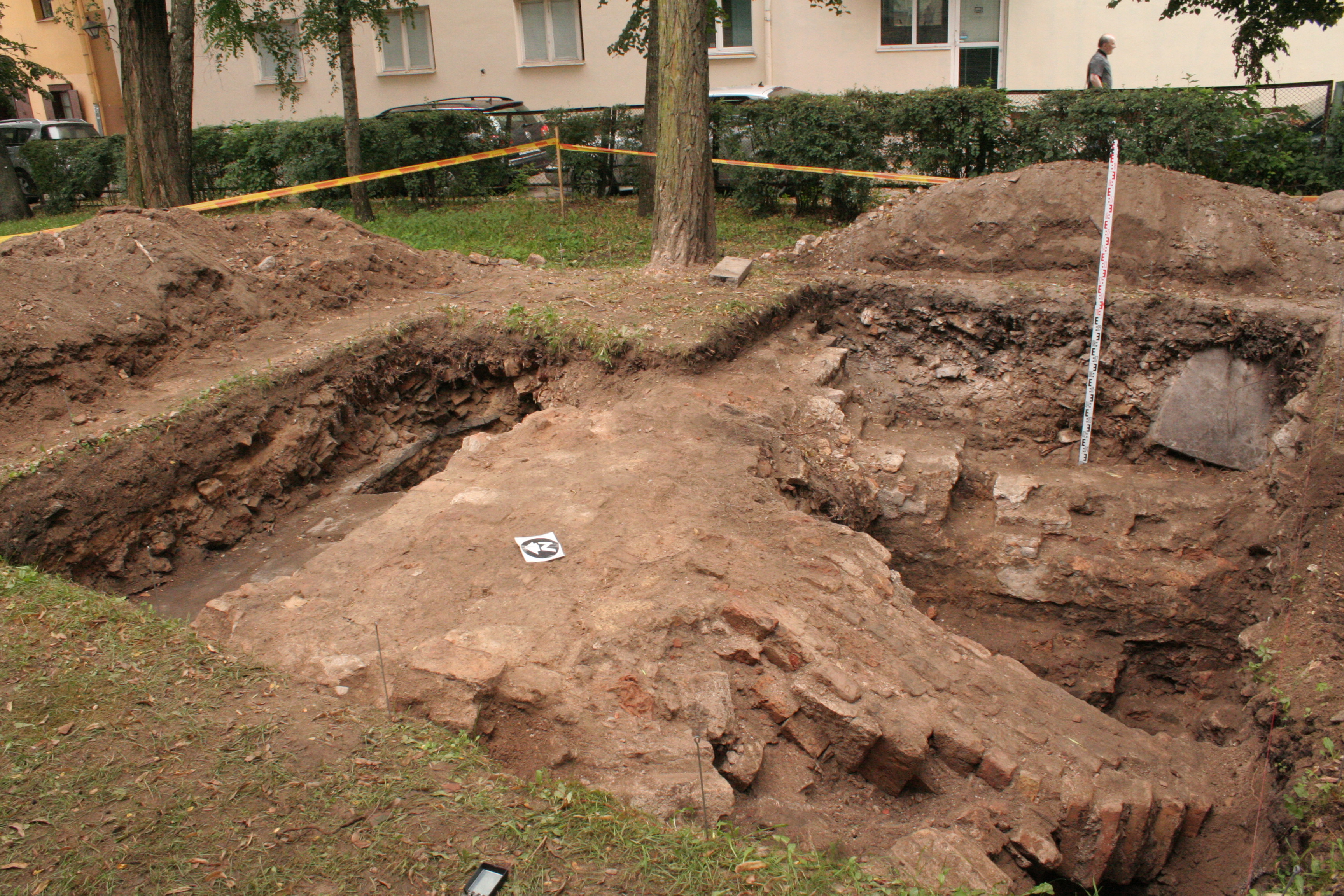


Copyright © 2015 Jon Seligman. All Rights Reserved.
Great Synagogue Memorial in Vilnius




A RESEARCH, EXCAVATION, PRESERVATION AND MEMORIAL PROJECT

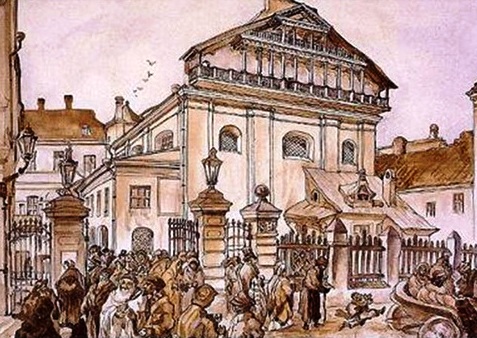
In 1989 an international tender for the establishment of the Great Synagogue Memorial was held by the Ministry of Culture of the Republic of Lithuania and the Vilnius City Municipality. The tender was won by architect Tsila Zak from Israel in cooperation with sculptor Willy Gordon from Sweden. As the the Synagogue and Shulhoyf were demolished the memorial is designed to integrate remains of the original monument recovered through excavation, together with the reconstruction of representative parts of the original complex supplemented with symbolic architecture. The resulting Great Synagogue Memorial will provide both an appropriate memorial space for the Great Synagogue and for the lost Jewish community of Vilnius.
The present concept for the Great Synagogue Memorial project includes reconstruction of the façade of the Shulhoyf facing Žydu street with both traditional and modern materials. The planning intention includes: the construction of the southern façade of the Great Synagogue, while the interior will remain open containing part of the Bimah, an empty cavity at the place of the Aron Kodesh (Torah Ark) and the symbolic statue of Jacob and the Angel; the rebuilding of the Strashun Library as a research centre, library and exhibition gallery; the reestablishment of the house of the Vilna Gaon as a museum for his legacy; and the use of other buildings of the Shulhoyf as an information centre and book store.
As part of the planning procedure a preliminary excavation was organised to localise the location of the remains of the Great Synagogue and to judge their potential.
The present concept for the Great Synagogue Memorial project includes reconstruction of the façade of the Shulhoyf facing Žydu street with both traditional and modern materials. The planning intention includes: the construction of the southern façade of the Great Synagogue, while the interior will remain open containing part of the Bimah, an empty cavity at the place of the Aron Kodesh (Torah Ark) and the symbolic statue of Jacob and the Angel; the rebuilding of the Strashun Library as a research centre, library and exhibition gallery; the reestablishment of the house of the Vilna Gaon as a museum for his legacy; and the use of other buildings of the Shulhoyf as an information centre and book store.
As part of the planning procedure a preliminary excavation was organised to localise the location of the remains of the Great Synagogue and to judge their potential.
The excavation lead by Zenonas Baubonis and Mindaugas Maciulis of the Kulturos paveldo išsaugojimo pajegos (‘Cultural heritage preservation forces’), was initiated by the Cultural Heritage Department of the Ministry of Culture, with the objective of identifying remains of the Great Synagogue of Vilnius with the aim of localising the remains, and assessing the nature, scope, methodology and research goals for the future.
In order to identify the exact location of the Great Synagogue of Vilnius it was necessary to collate historical plans and maps and then link them into the cartographic database of the Lithuanian State Coordinate System. The plans included were: the Vilnius Old Town of 1939 (1:1000); the Vilnius Great Synagogue building plan of 1939 (1:50) surveyed by Berlin and Segal; the pre-war Vilnius city plan (1: 250); and the plans of the Great Synagogue reconstruction project of 1893.
The area selected for archaeological prospection was dictated by the cartographic knowledge base together with the necessity to avoid modern buildings and infrastructure, roads, vegetation, and the desire to aim to excavate significant parts of the building required for planning any future memorial at the site.
During the summer of 2011, archeologist Zenonas Baubonis started the excavation and decided to concentrate on three soundings, totaling 79 square metres:
1) the entrance to the Great Synagogue of Vilnius from the Shulhoyf
2) the site of the Bimah and Aron Kodesh.
3) the north-eastern corner of the Great Synagogue.
In order to identify the exact location of the Great Synagogue of Vilnius it was necessary to collate historical plans and maps and then link them into the cartographic database of the Lithuanian State Coordinate System. The plans included were: the Vilnius Old Town of 1939 (1:1000); the Vilnius Great Synagogue building plan of 1939 (1:50) surveyed by Berlin and Segal; the pre-war Vilnius city plan (1: 250); and the plans of the Great Synagogue reconstruction project of 1893.
The area selected for archaeological prospection was dictated by the cartographic knowledge base together with the necessity to avoid modern buildings and infrastructure, roads, vegetation, and the desire to aim to excavate significant parts of the building required for planning any future memorial at the site.
During the summer of 2011, archeologist Zenonas Baubonis started the excavation and decided to concentrate on three soundings, totaling 79 square metres:
1) the entrance to the Great Synagogue of Vilnius from the Shulhoyf
2) the site of the Bimah and Aron Kodesh.
3) the north-eastern corner of the Great Synagogue.
The 2011 Preliminary Excavation
Tsila Zak's Proposal for the Great Synagogue Memorial in Vilnius
This site is best viewed in Internet Explorer or Firefox

Source:
Official report on database of the Cultural Heritage Department under the Ministry of Culture (in Lithuanian) - here
Report at the site of Kulturos paveldo išsaugojimo pajegos - here
Media Reports:
Delfi (in Lithuanian) - here
Sekunde (in Lithuanian) - here
Lithuanian Government Press Release - here
Jerusalem Post - here
Chabad Lubavitch News - here
Vos iz Neias? - here
Official report on database of the Cultural Heritage Department under the Ministry of Culture (in Lithuanian) - here
Report at the site of Kulturos paveldo išsaugojimo pajegos - here
Media Reports:
Delfi (in Lithuanian) - here
Sekunde (in Lithuanian) - here
Lithuanian Government Press Release - here
Jerusalem Post - here
Chabad Lubavitch News - here
Vos iz Neias? - here
Excavation Scenes
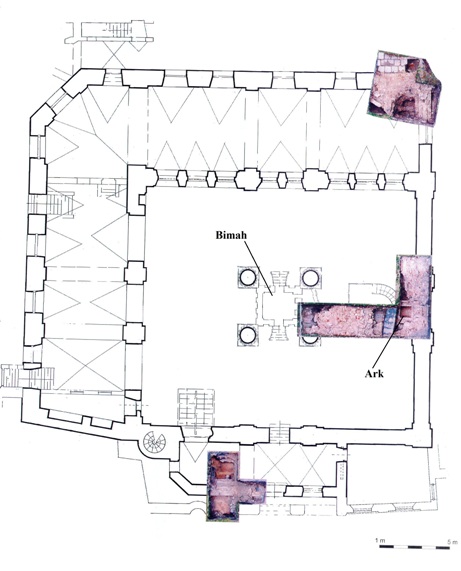
Plan of the Great Synagogue of Vilna
Sounding no.1: at the site of the entrance to the Great Synagogue of Vilnius, 4.5 meters to the southwest of the Vytes Nemunelio primary school. The excavation exposed part of the synagogue extension (the Polish); the southern, constructed from bricks, and up to 1.8 metres wide; the entrance to the Vilnius synagogue from the Shulhoyf; and three steps leading down from the entrance to a paved surface. Based on the excavation and historical sources, this part of the site dates to the second half of the 18th century, including reconstructed sections from the renovation of the synagogue in 1873. In the fill were glazed pottery shards and decorated paper sheets dating the fill to the pre-eighteenth century.
Sounding no. 2: The sounding, measuring 35 square metres, was located one metre NW of the school building at the speculated location of the Bimah and the Aron Kodesh (Torah Ark). Much of the area was filled with the remains of a brick vault that had crashed down on the floor from the roof of the building. The excavation unveiled the eastern wall of the Great Synagogue built of bricks bonded with lime mortar. Within the wall was a niche that is probably set below the Aron Kodesh. It measured 160 x 110 cms. This niche is most likely dated to the 17th century, from the time of the first construction of the synagogue. The purpose of this niche, though it may have originally have been part of a window, was not clear.
At the opposite side of the sounding was the column base of the Bimah, with a diameter of 57 cm. and surviving height of 40 cm. Adjacent to the base were fragments of a terrazzo floor. The floor was indeed two metres below street level, as noted in the written sources. This led up to the base of the banister wall leading up to the Bimah from the time of the 1893 reconstruction.
Finds from this sounding included coins dated to 1664 of the Grand Duke John II Casimir Vasa, minted both in Vilnius and in Poland; a coin from 1880 of Tzar Alexander III; decorative cornice tiles; and floor tiles.
Sounding no. 3: A 24 square metre sounding at the north-eastern corner of the Great Synagogue which was uncovered during the excavation. The walls have a width of 150 to 250 cms. Finds from this area included a Polish minted coin of Stanislaus Augustus dated 1788 and a Nazi 10 pfennig coin; tile fragments; pieces of a sculpted cornice; glazed pottery fragments and brass decorative ornaments from a book. These latter items date between the 17th to 19th centuries.
To preserve the remains of the Great Synagogue after the excavation, the remnants were covered with geotextile and backfilled with clean soil and resown with grass, until such time as the remains can be exhibited in the future as a proper commemoration to the Great Synagogue, the shulhoyf and the Jewish Quarter of Vilnius. Together with the built heritage that will be presented will be the artifacts. These included typical finds of the old Vilnius, such as ceramics, ceramic buttons, tile fragments, construction materials and coins. Of special interest were items specifically associated with the function of the synagogue, including bronze ornaments, Torah decorations and bindings of sacred books.
The excavation led by Zenonas Baubonas in 2011 was the source of much interest both from Lithuanian authorities and the small surviving Jewish community in Vilnius. Visitors to the site included Lithuanian Prime Minister, Andrius Kubilius, who stated that the Great Synagogue and the excavations "are important not only for Lithuania, but for the global Jewish community. It is a powerful symbol of both a great Jewish heritage, a great tragedy when the entire Jewish community was destroyed, and it is a very powerful symbol for the Jewish future. … Litvak cultural heritage is extremely important and we should be proud of what was created here by the Jewish community. … The Great Synagogue is not only about Jewish history, it is a particularly important element in Lithuania’s history of the colourful and multiethnic Vilnius”.
Sounding no. 2: The sounding, measuring 35 square metres, was located one metre NW of the school building at the speculated location of the Bimah and the Aron Kodesh (Torah Ark). Much of the area was filled with the remains of a brick vault that had crashed down on the floor from the roof of the building. The excavation unveiled the eastern wall of the Great Synagogue built of bricks bonded with lime mortar. Within the wall was a niche that is probably set below the Aron Kodesh. It measured 160 x 110 cms. This niche is most likely dated to the 17th century, from the time of the first construction of the synagogue. The purpose of this niche, though it may have originally have been part of a window, was not clear.
At the opposite side of the sounding was the column base of the Bimah, with a diameter of 57 cm. and surviving height of 40 cm. Adjacent to the base were fragments of a terrazzo floor. The floor was indeed two metres below street level, as noted in the written sources. This led up to the base of the banister wall leading up to the Bimah from the time of the 1893 reconstruction.
Finds from this sounding included coins dated to 1664 of the Grand Duke John II Casimir Vasa, minted both in Vilnius and in Poland; a coin from 1880 of Tzar Alexander III; decorative cornice tiles; and floor tiles.
Sounding no. 3: A 24 square metre sounding at the north-eastern corner of the Great Synagogue which was uncovered during the excavation. The walls have a width of 150 to 250 cms. Finds from this area included a Polish minted coin of Stanislaus Augustus dated 1788 and a Nazi 10 pfennig coin; tile fragments; pieces of a sculpted cornice; glazed pottery fragments and brass decorative ornaments from a book. These latter items date between the 17th to 19th centuries.
To preserve the remains of the Great Synagogue after the excavation, the remnants were covered with geotextile and backfilled with clean soil and resown with grass, until such time as the remains can be exhibited in the future as a proper commemoration to the Great Synagogue, the shulhoyf and the Jewish Quarter of Vilnius. Together with the built heritage that will be presented will be the artifacts. These included typical finds of the old Vilnius, such as ceramics, ceramic buttons, tile fragments, construction materials and coins. Of special interest were items specifically associated with the function of the synagogue, including bronze ornaments, Torah decorations and bindings of sacred books.
The excavation led by Zenonas Baubonas in 2011 was the source of much interest both from Lithuanian authorities and the small surviving Jewish community in Vilnius. Visitors to the site included Lithuanian Prime Minister, Andrius Kubilius, who stated that the Great Synagogue and the excavations "are important not only for Lithuania, but for the global Jewish community. It is a powerful symbol of both a great Jewish heritage, a great tragedy when the entire Jewish community was destroyed, and it is a very powerful symbol for the Jewish future. … Litvak cultural heritage is extremely important and we should be proud of what was created here by the Jewish community. … The Great Synagogue is not only about Jewish history, it is a particularly important element in Lithuania’s history of the colourful and multiethnic Vilnius”.
Area 1
Area 2
Area 3
Area 1
Area 2
Area 3
Zenonas Baubonis
[The Project] [Community] [Partners] [The Team] [The Synagogue] [The Vilna Gaon] [GPR Survey] [Media] [Links]
